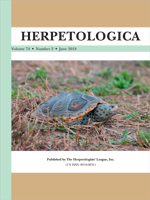The ability to discriminate among potential prey is foundational for predators making foraging decisions, as well as for the evolution of food preferences. Eastern Indigo Snakes (Drymarchon couperi; EIS) are federally threatened and considered dietary generalists, but qualitative evidence indicates that snakes are consumed more often than other prey types. In this study, we used a repeated-measures tongue-flick assay to investigate EIS response to prey scent experimentally, and made inferences about potential preferences. Hatchling EIS responded more strongly to scents from snakes as compared to their response to scents from mice or controls. Moreover, hatchling EIS discriminated between the scents of representative colubrid and crotaline snakes, exhibiting a stronger response to the latter. A follow-up experiment using scents from three different species of pit vipers indicated that hatchling EIS did not discriminate among scents from members of this snake subfamily. After a year in captivity in which EIS were primarily fed mice, we retested a subset of the same snakes and documented an increased response to the scent of mice, whereas responses to snake prey scents did not change. Broadly, we reveal that hatchling EIS have relatively strong responses to scents from snake prey that vary depending on the species, and these responses becomes less pronounced over time. Given that relatively strong responses typically indicate preference, there are at least two potential explanations for the increased response to mouse scent over time: Either EIS exhibit an innate ontogenetic shift in prey preference towards mice, or their prey preference is plastic and influenced by diet in captivity. Given what is known about EIS natural history, the latter explanation is most likely. Overall, our study provides detailed information regarding chemosensory prey discrimination by EIS, with important implications for their ongoing reintroduction efforts.
How to translate text using browser tools
1 June 2018
Eastern Indigo Snakes Exhibit an Innate Response to Pit Viper Scent and an Ontogenetic Shift in Their Response to Mouse Scent
Scott M. Goetz,
James C. Godwin,
Michelle Hoffman,
Fred Antonio,
David A. Steen
ACCESS THE FULL ARTICLE

Herpetologica
Vol. 74 • No. 2
June 2018
Vol. 74 • No. 2
June 2018




